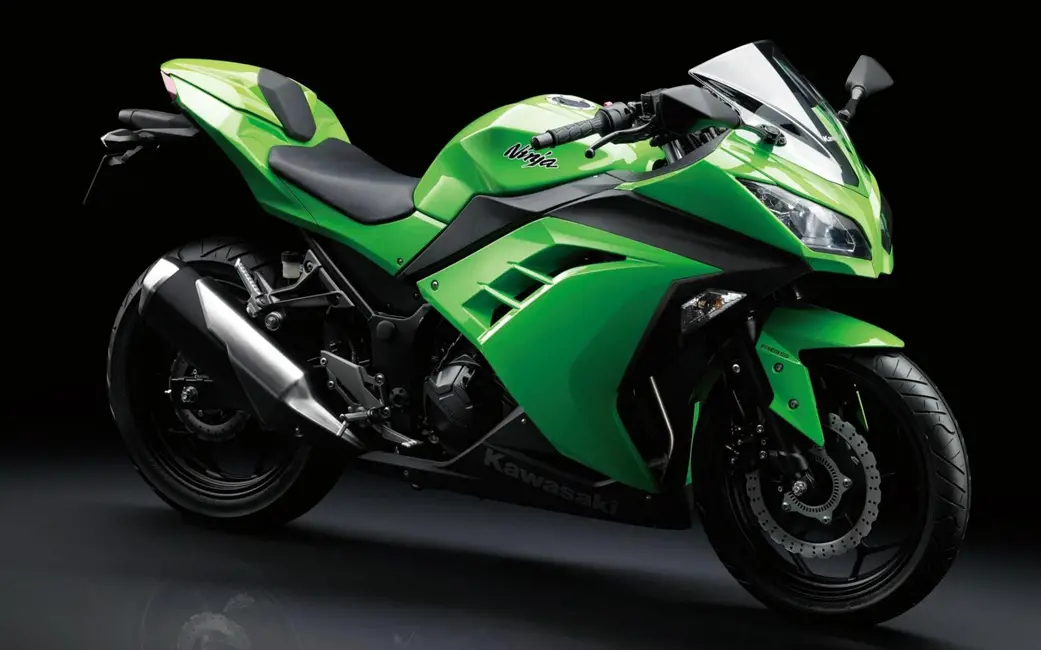Motor oil is essential to any engine be it in a car or your Kawasaki Ninja 300. The oil acts as a lubricant for the metal parts of an engine, reducing friction and allowing the engine to operate freely without excessive heat and loss of power. Not only does the oil protect the metal parts, but it also keeps the rubber seals from deteriorating and letting grime and dust into the delicate engine.
Oil is needed to reduce the heat that the engine produces from the metal parts rubbing against each other and moves every part smoothly and efficiently. The oil rotates around the engine dissipating heat and also cleans the internals of your Kawasaki Ninja 300.
Types of Oils
The most common types of engine oils are:
- Mineral
- Synthetic
- Synthetic-Blends
Mineral oils are created from natural resources (crude oil) and are later refined to be put into engines. Since this type of oil is natural and based on carbon composites, it needs to be changed frequently as it can result in sludge. This type of oil is usually used for smaller cc bikes.
Synthetic oils are made in a lab and not taken from a natural source. This oil is created for high-performance engines as they are synthetically made in a lab and can withstand high heat temperatures. This oil provides maximum safety and has a long change interval, but can often be very pricey.
Synthetic-Blends or semi-synthetic oils are made with a combination of mineral and synthetic oils. This oil has a longer change life than minerals oil but is also more expensive. This is ideal for people who want certain aspects of synthetic oil without paying the synthetic oil premium.
Oil Grades
Selecting the right oil means knowing the oil grading. The bunch of letters and numbers printed on oil cans are not for show but serve a purpose. People think that these numbers are an indication of temperature. While these people are not wrong, they are not right either.
The letter w seen on many cans is an indication for winter and the number beside it signifies the viscosity index. The lower the number, the better suited it is for motorcycles that run in low temperatures. The number after the w is an indicator of the oil properties. The higher the number is, the better the oil maintains itself at higher temperatures.
Know your Ninja 300
The Kawasaki Ninja 300 is a successor to the lightweight and famous sports bike, the Ninja 250R. The improved Ninja 300 offers a 300 (296) cc straight twin engine producing 39.95 horsepower and torque across the rev range of 24.40-18.40 N.m.
Despite being a sports bike, the Ninja 300 is considered by many to be their first bike, the bike they learn on and fall in love with the motorcycle world. Many responsibilities come with maintaining your new bike such as basic maintenance which includes engine oil and the best oil grade for your Kawasaki Ninja is 10w-40.

Selecting the best Oil
While you may be tempted to go out and grab yourself a pricey bottle of synthetic oil, it may not be the wisest choice. While synthetic oils are the best in the market, spending that amount of cash on a bike that is only 300cc might not be the answer for the average consumer.
Now that synthetic oils are out of the picture, you might want to go for the option of a synthetic blend. While that can be a good option, given you find the proper brand, it is generally advised to stay away from synthetic blends. The problem with synthetic blends is that there is no set standard for what constitutes a synthetic blend. The only regulation is that a synthetic bottle of oil has to be synthetic to some degree. This means that your oil could be 1% synthetic or 99% synthetic. There is no law out there that makes the company tell their customer the blend percentage.
The best oil you could use for your Kawasaki Ninja 300 is the 10w-40 Kawasaki Mineral oil. The reason for this is that first of all it removes the hassle of choosing a brand. The company oil is perfect for any normal rider and will give excellent results. It is also priced similar to many competing brands so you don’t have to pay the extra brand tax either. The mineral oil will provide ample lubrication and will keep your engine running smooth. The only things you can improve are by changing the oil every 5000 miles instead of the factory-recommended 7500 miles. Remember, the oil suggested here is only for the average user and not for the track.
Checkout our article on whether Hayabusa can be good for Touring?
Now that you know the best oil for your engine and when to change it, you can ride safely and without the hassle of trying to find the best brand and focus on riding your bike. Remember to always wear a helmet and stay safe.





